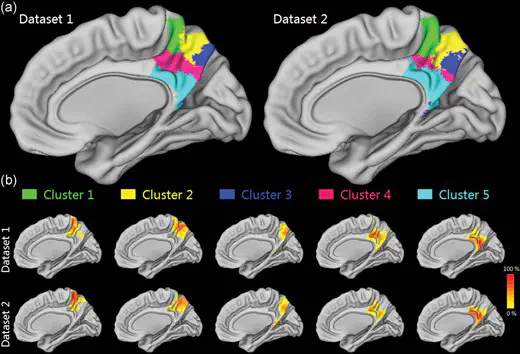 PMC parcellation
PMC parcellationAbstract
Regional structural and functional variations in the posteromedial cortex (PMC) have been found in both animals and humans, strongly suggesting the presence of subdivisions. However, there is no consensus on how to subdivide the human PMC. Here, we investigated the anatomical parcellation scheme and the connectivity pattern of each subdivision of the human PMC using diffusion tensor imaging data from 2 independent groups of volunteers. The parcellation analyses of the 2 datasets consistently demonstrated that the human PMC can be parcellated into 5 subregions. The dorsal portion of the PMC was subdivided into anterior, central, and posterior subregions, which participate in sensorimotor, associative, and visual functions. The ventral PMC contained a transitional region in the dorsal portion and a ventral subregion that is the core of the default mode network. The parcellation results for the human PMC and its anatomical connectivity patterns were further supported by evidence from the macaque PMC. Furthermore, functional connectivity analysis revealed that each subregion exhibited a specific pattern similar to that of its anatomical connectivity. The proposed parcellation scheme may facilitate the study of the human PMC at a subtler level and improve our understanding of its functions.